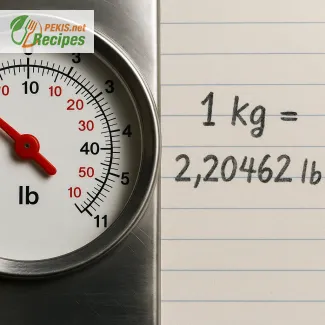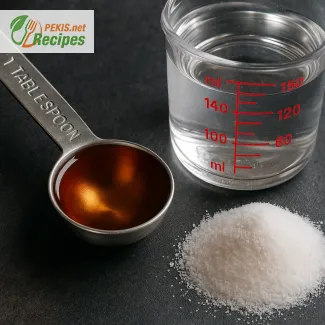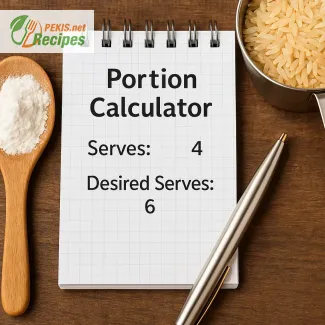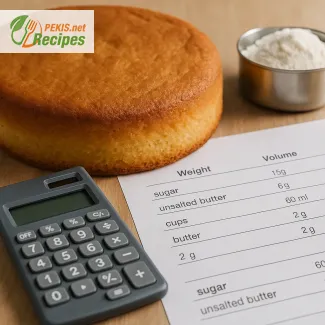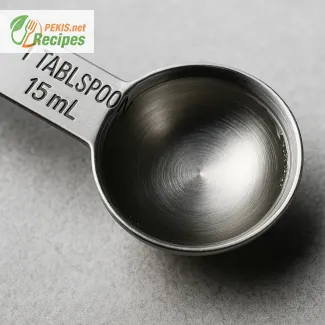
Understanding Tablespoons and Milliliters: Are They Always the Same?
Why the conversion of 1 tablespoon to 15 ml isn't always straightforward
When working with tablespoon (tbsp) measurements in recipes or nutritional guides, you might come across the familiar assumption: 1 tablespoon equals 15 ml. But is that always true? If you’ve ever compared packaging from the US, UK, Australia or Europe, you may have noticed that the values don't always match. This seemingly simple conversion hides a surprising amount of complexity, and it's exactly what we'll explore in this article—designed for home cooks, food bloggers, nutritionists, and anyone who works with volume-based measurements.
We’ll dive into how different countries define a tablespoon, why milliliters vary depending on context, and what you should use when accuracy truly matters—like in baking, nutrition, or medication.
What does 1 tablespoon mean in different countries?
The meaning of 1 tablespoon can vary depending on where you are. In the United States, 1 tablespoon is officially 14.7868 ml, often rounded up to 15 ml in recipes and dietary guidelines. However, in Australia, a tablespoon is defined as 20 ml, which can make a significant difference in cooking or measuring ingredients.
In the United Kingdom, it used to be 17.7 ml during imperial times, but nowadays, most UK recipes also default to 15 ml for simplicity and standardization. European countries that use the metric system (like Germany, France, Italy, and Spain) generally align with the 15 ml definition.
This variation may seem minor, but if you’re scaling a recipe or following dietary instructions, these small differences can add up, especially when you're working with liquids, spices, or medicine.
Why are tablespoons not globally standardized?
The term tablespoon refers to a volume measure, but unlike grams or milliliters, it's tied to cultural and historical usage. In fact, the word "tablespoon" originated from household cutlery, not a laboratory-standardized measuring tool.
Countries have formalized their own versions over time:
- US customary tablespoon = 14.7868 ml
- Metric tablespoon = 15 ml
- Australian tablespoon = 20 ml
Because of these differences, most global packaging, especially for food and supplements, now includes both metric and imperial equivalents—but in everyday life, people rarely check the fine print.
When does the 1 tablespoon = 15 ml rule apply?
If you're following a modern recipe from a metric-based country, then assuming that 1 tablespoon equals 15 ml is usually safe. It’s the metric standard, and most digital measuring spoons and cookbooks follow this rule.
But in cases where the recipe is from the United States and written before the digital measurement age, or in certain traditional cookbooks, the tablespoon might actually be closer to 14.8 ml. The difference is minor, but in precision-based cooking or science, even a fraction of a milliliter can impact results.
Does this variation matter in cooking?
In everyday cooking, especially for soups, sauces, or stews, this kind of variation is almost always negligible. But in baking, where ingredient proportions are critical, even small discrepancies can alter the final texture and rise.
For example, if a recipe calls for 4 tablespoons of baking powder, and you use 20 ml tablespoons instead of 15 ml, you’ve just added an extra 20 ml of leavening agent—which could lead to overflow, bitterness, or a completely different structure.
So yes, it does matter, especially if you're making sensitive or tested recipes where consistency is key.
Why do some packages say “1 tbsp = 15 ml” while others don’t?
You’ll often see food packaging or medicine droppers indicate “1 tbsp = 15 ml.” This simplifies things for international markets, especially in regions that use the metric system. However, some US-based nutritional labels or medicine dosages still use the exact 14.7868 ml value, particularly in pharmaceutical contexts where precision is crucial.
In global commerce, the 15 ml equivalence is becoming a default for simplicity, even if it’s not technically correct in every country. For home cooking and casual measurement, this standard works well. But if you’re measuring medication for children, making precise herbal tinctures, or preparing a scientific solution, it’s better to use a graduated syringe or digital scale to be accurate.
Should I convert tablespoons to ml when cooking?
Yes—especially if you're using international recipes. Converting tablespoons to milliliters (or vice versa) makes it easier to scale recipes, use accurate digital tools, and avoid miscommunication when sharing recipes across regions.
The best rule of thumb:
- 1 tablespoon (metric) = 15 ml
- 1 tablespoon (US) = 14.8 ml
- 1 tablespoon (Australia) = 20 ml
If your recipe doesn't specify the region, assume 15 ml unless context tells you otherwise (for example, if the recipe uses Fahrenheit, cups, and ounces, it's likely American).
How to measure 1 tablespoon precisely
If you're striving for precision in your cooking or nutrition, here’s what you should do:
- Use a calibrated tablespoon, not cutlery from your drawer
- When in doubt, use a measuring spoon or syringe labeled in milliliters
- If you’re following a recipe from a different country, check the origin or standard system used
You can even purchase digital kitchen tools that measure liquids by volume with extreme accuracy. These are especially helpful for pastry chefs, nutritionists, or anyone with dietary restrictions that require careful control over sodium, fat, or sugar intake.
Key takeaways: Is 1 tbsp always 15 ml?
The short answer: not always, but usually yes—if you’re following modern metric standards.
Here’s what to remember:
- In most recipes today, 1 tablespoon is standardized at 15 ml
- Small variations exist by country—especially the 20 ml tablespoon in Australia
- In casual cooking, the difference is minor
- In baking, nutrition, or medicine, even 0.2 ml can matter
- When in doubt, use tools marked in milliliters for the most accurate results
By understanding these subtle differences, you can avoid mistakes, achieve better results in the kitchen, and share recipes across cultures with more confidence.
